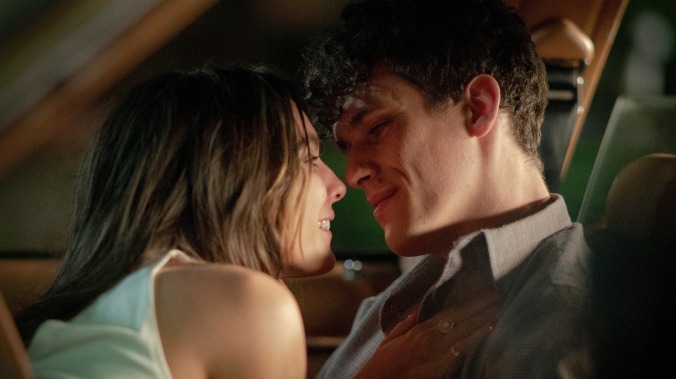As far as pivotal periods of our lives go, the post-grad era’s proven just as fertile ground for coming-of-age stories as the first year of high school or that last hazy summer before matriculation. Films like The Graduate, Kicking And Screaming, and The Last Days Of Disco, as well as TV series like Girls and the short-lived Underemployed, trenchantly explored post-college life and its combination of aimlessness and possibility. In the right hands, this figurative fork in the road can be a compelling journey in and of itself; Bridge And Tunnel, a new six-part series about post-grads in 1980s Long Island, just spins its wheels.
Of course, questionable accent work isn’t unique to Bridge And Tunnel (see: any number of New York- and New York-adjacent-set productions), but the overly chatty nature of the series makes it almost impossible to ignore. Very little happens in the first four parts of season one, which premiered January 24 on Epix, and the limited action that does occur is parsed interminably before and after by the six telegenic friends and recent college graduates at the center of the story. Our ostensible lead is Jimmy (Sam Vartholomeos), a photographer who’s landed an assignment with National Geographic in Alaska. He returns to Long Island to while away the last two weeks before the job starts, reconnecting with his friends as well as his on-again/off-again girlfriend Jill (Caitlin Stasey).
That’s the extent of Jimmy’s arc, which is really more of a circle—he shoots the shit with Mikey (Jan Luis Castellanos) and Pags (Brian Muller), hooks up with Jill, fights with Jill about their now-only-theoretical relationship, then licks his wounds at home. This cycle is punctuated with drinks at the local watering hole and some genial grousing from his dad Artie (Burns), but it repeats for much of the first two hours of the season. Vartholomeos’ young co-stars don’t fare much better: Jill tawks incessantly about wanting to be a famous fashion designer, but shows no real aptitude or even passion for it. Mikey can’t yet land a job with his new degree in accounting, but he only seems concerned about that when he’s flirting with Tammy (Gigi Zumbado). Otherwise, he’s content to pick up where he left off with his high school girlfriend Stacey (Isabella Farrell), who has no real characteristics beyond being the one friend who lives in New York City.
Perhaps it’s just the result of writing for yourself, but Burns’ Artie, a middle-aged house painter who waxes philosophical from his stoop and nurtures his son’s interest in photography at every turn, is the most fleshed-out character by a mile. Sure, there’s a hint of stymied progress emanating from Artie, who may or may not be trying to live vicariously through his son. His conversations with his son about influential photographers and Jimmy leaving Long Island for good certainly have a bittersweet quality. Burns portrays Artie as contented, but also cognizant that he may not have dreamed very big in his own youth. That doesn’t diminish the pleasure he does take in his life as it is, which you’d think would be a lesson passed down to at least one of the young adults in his proximity, but everyone else is too busy talking to really listen.
There is some potential in Pags’ storyline, as the mouthy would-be law student slowly becomes aware of how life is passing him by, a reality illustrated by how much more his sister and mom have going for them. When Muller’s mugging is interrupted by a genuine spark of poignant recognition, Pags feels more like a person instead of a character outline. Unfortunately, these moments are too far and few between for Pags and his buddies, who all suffer from limited depictions. Mikey mostly struts, Tammy pines, and Stacey only pivots between sullen and annoyed. Jimmy and Jill have the exact same conversation about their relationship, whether it’s on the phone or in person. And through it all, there’s very little sense of why any of these friendships began in the first place. The guys get along well, even if they don’t dig especially deep, but the three female characters have a much more contentious dynamic, which is only strained further by Jill blurting out Tammy’s secret crush on Mikey in front of his ex Stacey. With friends like these, who needs to think twice about staying in touch?
And yet, if that souring were the focus of Bridge And Tunnel, it’d be a much more interesting and cohesive show. Watching longtime friends realize they’re no longer compatible made Girls and now Insecure two of the more insightful shows about twentysomethings embarking on new chapters in their lives. Burns, who wrote all six episodes, could have such revelations in store in the final two episodes of the season. But for now, Bridge And Tunnel is stuck in neutral, hesitant to let its characters let go of a past that hardly seems worth revisiting.



 Keep scrolling for more great stories from A.V. Club.
Keep scrolling for more great stories from A.V. Club.